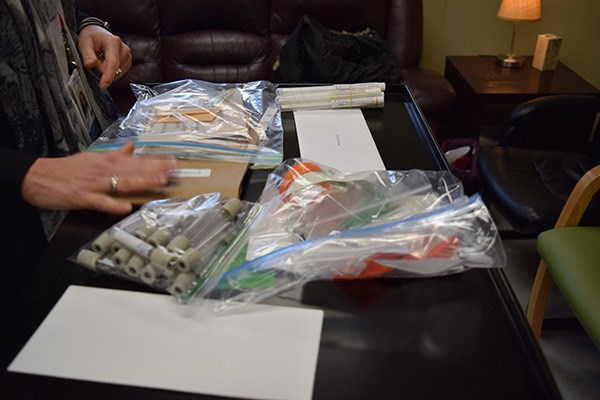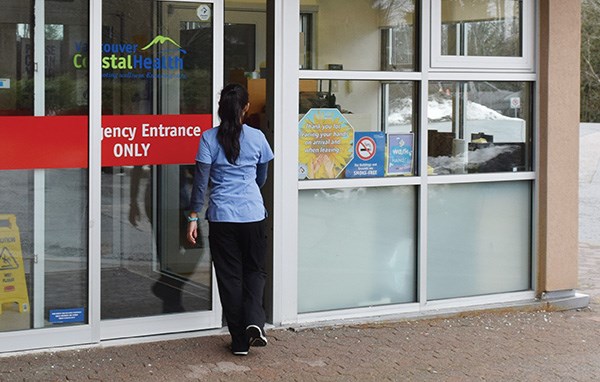After a night out with some friends, a young woman awakes feeling groggy and in pain. Something bad has happened, she realizes – she’s been raped.
Scenarios like this are being played out on university campuses, at festivals and house parties and in hotels and ski resorts, according to Vancouver lawyer Megan Ellis, who litigates civil sexual assault cases.
Ellis has represented hundreds of sexual assault victims. She currently limits herself to taking four cases per week.
She advises individuals who have been date-raped to head to the hospital emergency and ask for a blood test for date rape drugs such as GHB and Rohypnol.
“The hospitals have to give you a blood test right then, not two hours from then,” she said, adding cases where the victim’s memory has been impacted by drugs are harder to prove, so testing is important.
About 25 per cent of women who were sexually assaulted report that drugs of some kind were a factor, according to the Society of Obstetricians and Gynecologists of Canada.
Forty per cent of women in Canada have been sexually assaulted at some point in their lives, according to an Ending Violence Association of British Columbia fact sheet.
In Squamish, a survivor can choose to undergo a sexual assault forensic exam at the hospital. If she wishes to involve the police, after she tells an officer, an investigator is assigned to her case and statements are taken from her and any witnesses. With the written consent of the victim, the police seize the forensic exam evidence, according to RCMP Staff Sgt. Brian Cumming.
“Other investigative steps may be taken depending on the circumstances of the case,” he said. “The evidence collected in the testing would go from the secure storage at the hospital to the secure storage at the RCMP detachment.”
Forensic analysis of the seized items is conducted at the police forensic lab.
If the identity of the accused is known or becomes known through forensic analysis, a report is written to Crown counsel outlining the facts of the case, and the forensic evidence collected. The Crown then decides if criminal charges can be laid, Cumming explained. If so, a criminal prosecution follows an arrest, the timing of which depends on the circumstances of the case.
“The primary factor in determining the timing would be the safety of the victim,” Cumming said.
A sexual assault survivor can also decide to pursue damages in a civil case, with or without having gone through a criminal proceeding, through a lawyer such as Ellis. The civil process is led more by the victim than a criminal case, where the victim is a witness in the Crown’s case, but civil cases require that both the victim and the accused have funds, Ellis said.
Although Squamish has come a long way in assisting rape survivors – as of December, sexual assault forensic testing is available at Squamish General Hospital – much more needs to be done to support victims of sexual assault once they leave the hospital, according to several advocates who work in the field.
In 2000, there were 21 provincially funded sexual assault or women assault centre programs across B.C. to help victims of sexual assault, according to Tracy Porteous, executive director of the Ending Violence Association. In 2002, the provincial funding for those programs were cut, she said.
“It is like we have slid down a hill,” she said of the decline in support for sexual assault victims.
Fewer than 15 hospitals in B.C. are equipped to respond to sexual assault, she said.
Her organization is calling for hospitals, police, people involved in the court system and counsellors to have training in trauma.
“How someone is affected by someone purposefully demeaning and degrading and invading someone’s bodily integrity is very, very harmful,” she said.
Eighty per cent of assault victims tell someone, and the response of the first person impacts whether or not the survivor will continue to tell her story, Porteous said.
“The response should be loving and caring… not judging and not blaming.”
Some communities have a professional who guides survivors through the court process, if the survivor chooses to seek justice.
Shannon Cooley Herdman, the Howe Sound Women’s Centre sexual assault response and prevention coordinator, said unfortunately, no one is filling this role in Squamish.
“I hope to see an outreach Stopping The Violence contract or a specialized victim service contract to serve Squamish,” she said.
Ellis said a societal campaign should begin against date rape and date rape drugs, as there has been around drunk driving.
“Look at all the effort, all the government, private money that has gone in to drunk driving over the past number of years and look how much it has changed behaviour,” she said. “Compare that to how much effort that has gone into dealing with sexual assault.”
Dalya Israel, manager of victim services and outreach programs for Vancouver’s Women Against Violence Against Women (WAVAW) rape crisis centre, agrees much more needs to be done.
“Systems, institutions and individual perpetrators must be held accountable for perpetuating violence against women. Sexual assault services are critical for survivors, and the health-care system must fund and support these essential services,” she said. “Women deserve access to health-centred care after they have experienced sexualized violence. They deserve attention that focuses on healing their body, mind and spirit as well as a focus on forensic evidence collection.”
For Porteous, the first step is more discussion.
“Trying to have public conversations about sexual assault and relationship or dating violence is part of the antidote,” she said.

Levels of sexual assault
The Criminal Code of Canada defines three levels of sexual assault:
• Level 1: sexual assault: any forced sexual contact without bodily harm.
• Level 2: sexual assault: forced sexual contact causing or threatening to cause bodily harm using a weapon (imitation or real).
• Level 3: sexual assault: forced sexual contact that causes aggravated bodily harm or endangers the life of the survivor or others.
Sexual assault statistics
Less than eight per cent of women who are sexually assaulted report it to the police. Of sexual assault cases reported, 80 per cent of survivors knew their assailant. Of them:
•10 per cent were assaulted by a ‘friend’
• 41 per cent by an acquaintance
• 28 per cent by a family member
• 20 per cent by a stranger
Source: Ending Violence Association BC.



